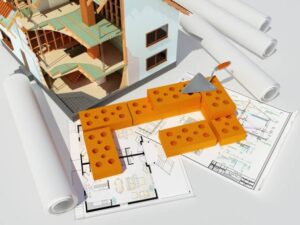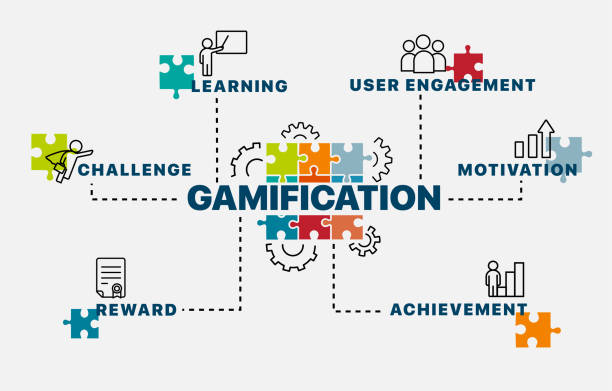The Age of Digitalization started roughly 40 years ago with the advancement of information technology. With the exception of education, it fundamentally altered how people interacted and how businesses operated. In spite of the rapidly evolving technologies all around us, classroom instruction hasn’t changed much in a very long time. But, with change gamification is emerging as a powerful alternative.
The lecturer stood in front of the class and used the usual methods of reading, speaking, and writing on the chalkboard to impart knowledge. The same has up until now been true of architectural education. But times are changing. Kids of today can benefit from cutting-edge teaching techniques like gamification that will challenge their cognitive capacities because they have grown up with digital technologies all around them.
Advantages of Gamification
One advantage of games is that they produce “timeline-less environments.” Time doesn’t actually exist in a game world. Despite the lack of time, things keep moving. Instead, games function by creating “triggers” that start a chain of events. For instance, if you step on a gold coin in a game, the “pick up” command will likely be activated. Your character then collects the coin.
 (Photo from iStock)
(Photo from iStock)
For instance, when your perspective is close enough to, let’s say, a bush, a trigger will activate the front door. Customers are given the freedom of mobility and space exploration that gamers take for granted all the time thanks to this interactivity.
Gamification and interactive design’s portability are further advantages. Design choices should be easily transferred between portable devices when using interactive design tools, rather than being restricted to a desktop computer. Real-world freedom is made possible via portability.
To Promote Architectural Specialization
Gamification is the process of integrating game-specific elements into environments that are not games, such as role-playing, challenges, levels, and rewards. Studies show that gamification techniques used in education help students learn. By letting them use their imaginations to build real-world scenarios in a virtual simulation. In a field as technical and design-focused as architecture, this hands-on approach to learning appears to be nearly essential.
Gamification in Architecture in the Future
 (Photo from iStock)
(Photo from iStock)
In the very near future, you will witness people “working” in virtual workplaces, “living” in virtual residences. Or “playing” in virtual classrooms in order to test the suitability of a design before it is finalized. Another use case involves visualizing a room’s utility while creating a space for people with physical or mental limitations.
The study “A Gamification Engine Architecture for Enhancing Behavioural Change Support Systems” explores the potential of using gaming as “a flexible and scalable ICT solution architecture”. That is highly personalized for dementia patients, for teaching cognitive skills, and for assisting professionals and caregivers.
“What we’re really looking for is the freedom and ability for a prospective client to move through their building exactly as they would after the project is done being built”. In other words, a space’s design will be fully developed and “experienced” practically before any building work starts.
In other words, there are countless opportunities. By making architecture more game-like, designers can put themselves in other people’s shoes and improve a design’s use, liveability, and durability.
How can gamification help you advance your career as an architect?
There are a few things to consider if you want to use gamification to advance your career in architecture. You must first decide what objectives you hope to accomplish through gamification. To assist you in achieving those objectives, you must secondly choose the appropriate game mechanics and elements. Third, you must create a learning experience that uses these game principles and aspects effectively.
Gamification, when used effectively, has the potential to help you advance your architectural career. So, if you’re seeking for a more fun and dynamic learning experience, think about how gamification might help you advance your career in architecture.
In the field of participatory design for architecture and urban design. VR has recently come to be recognized as a transformational tool that enables varied stakeholders. To actively participate in design and planning processes.
Participatory design has acquired a lot of popularity as a way to make sure that designs are more inclusive, sustainable, and receptive to user demands. Participatory design involves end-users and stakeholders in the development of architectural and urban settings. Immersive, interactive experiences made possible by the incorporation of VR. In participatory design processes enable users to visualize, explore, and offer input on design suggestions in an interesting and realistic way.
New Advancements in Technology
 (Photo from iStock)
(Photo from iStock)
Thanks to improvements in VR technology, the fields of architecture and urban design now have access to a number of tools and platforms. These resources, such as VR plugins for BIM software and gaming engines like Unity and Unreal Engine.
They provide immersive experiences that feature realistic visual and audio sensations. As well as the freedom to move around in the virtual environment. Which gives the experience motion and balance. As the use of VR in participatory architecture and urban design expands, it is crucial to evaluate how various VR technologies. Such BIM and gamification, might foster meaningful involvement and improve the entire design process.
Purpose of Gamification in Architecture
Virtual reality (VR), which has developed significantly over the past few decades, is defined as a “computer-generated environment that closely resembles reality to the person experiencing it.” Beyond the constraints of conventional visual aid, virtual reality allows you to feel as though you are literally present in a three-dimensional world.
VR takes into account the complexity of human perception, including a wide variety of senses. Like hearing, balance, smell, temperature, emotion, and panic. Even if sight is the primary sense used to receive information. By utilizing VR, which duplicates these sensory experiences. Users may interact with and explore the virtual universe in a way that is very comparable to the real world, making the experience more realistic and engaging.




